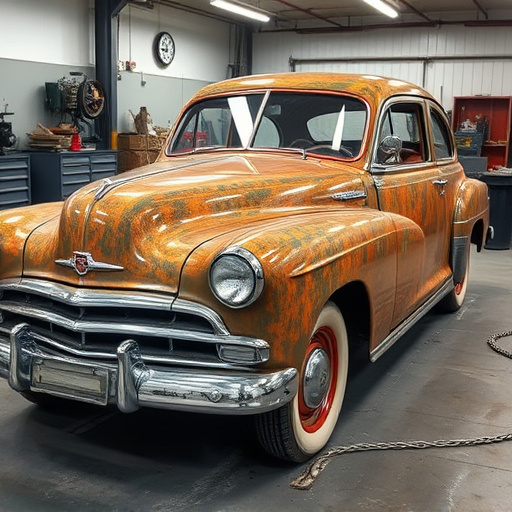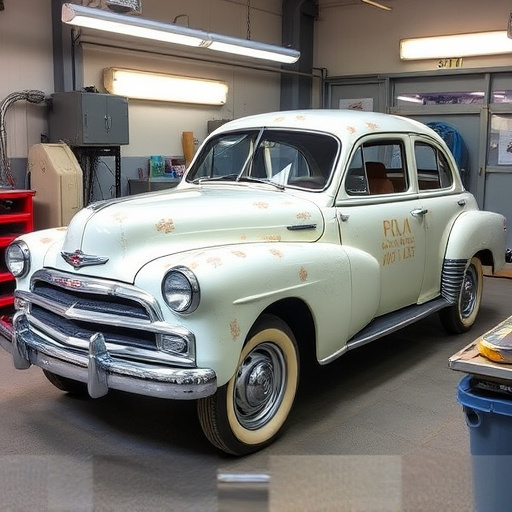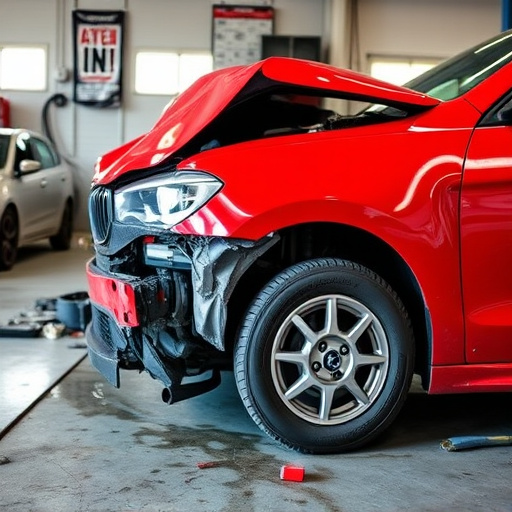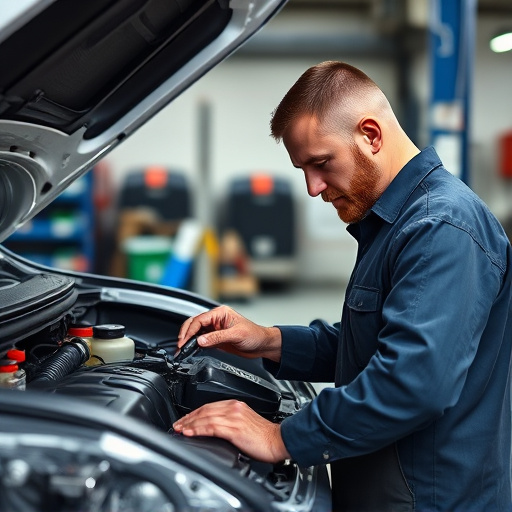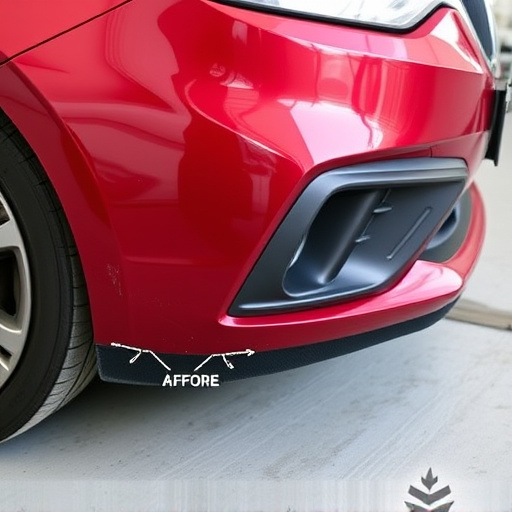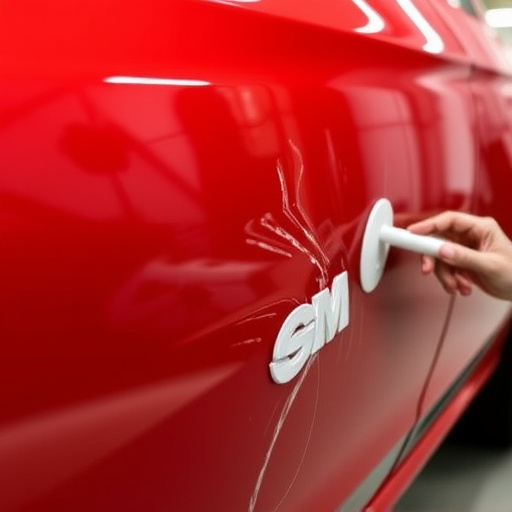Tesla's structural aluminum alloys, celebrated for their light weight and strength, require specialized repair techniques due to their unique properties like denting susceptibility. Minor dents can be addressed through Paintless Dent Repair (PDR), while extensive collision damage necessitates precision cutting and welding with tools like TIG (Titanium Gas) welding to maintain original design integrity. Professional technicians ensure structural soundness by adhering to these advanced practices, preventing future weakness from everyday wear or minor accidents.
Tesla vehicles are renowned for their innovative design and advanced materials, with structural aluminum playing a pivotal role in achieving lightweighting. This article delves into the intricacies of Tesla’s structural aluminum alloys, exploring effective repair techniques for panels and frameworks. Furthermore, it examines welding considerations to ensure optimal joint strength, providing valuable insights for professionals involved in Tesla structural aluminum repair.
- Understanding Tesla's Structural Aluminum Alloys
- Repair Techniques for Aluminum Panels and Frameworks
- Welding Considerations for Optimal Joint Strength
Understanding Tesla's Structural Aluminum Alloys

Tesla’s vehicles are renowned for their sleek, modern design and innovative use of materials. At the heart of this is Tesla’s structural aluminum alloys, a key component in their automotive construction. These lightweight yet robust materials play a vital role in enhancing vehicle performance and safety. Understanding the unique properties and characteristics of Tesla’s structural aluminum is crucial when it comes to repairs, especially in specialized areas like Tesla structural aluminum repair.
When a Tesla encounters a collision or requires maintenance, auto glass replacement, or automotive body shop services, the integrity of these alloys must be carefully considered. The specific aluminum grades used by Tesla are designed for optimal strength-to-weight ratio, corrosion resistance, and durability. Skilled technicians in a reputable collision repair shop will possess the expertise to work with these materials, ensuring precise welding techniques and accurate measurements to maintain the vehicle’s structural integrity.
Repair Techniques for Aluminum Panels and Frameworks

When it comes to Tesla structural aluminum repair, the unique properties of aluminum require specialized techniques. Unlike steel, aluminum is more prone to denting and deformation due to its softness and lightweight nature. Repairs often involve either straightening the panel or replacing damaged sections. Advanced methods like PDR (Paintless Dent Repair) can be employed for minor dents, preserving the original finish. This technique uses specialized tools to gently push out the dent from the inside, leaving no visible marks.
For more extensive damage, such as collision-related injuries, a more intensive approach is necessary. Collision damage repair techniques tailored for aluminum structures include precision cutting and welding. Specialized welders and jigs are used to ensure accurate alignment and strength in the repaired areas. The goal is to maintain the integrity of the original design while restoring the car’s structural soundness, akin to the meticulous work in automotive repair services designed for high-performance vehicles.
Welding Considerations for Optimal Joint Strength
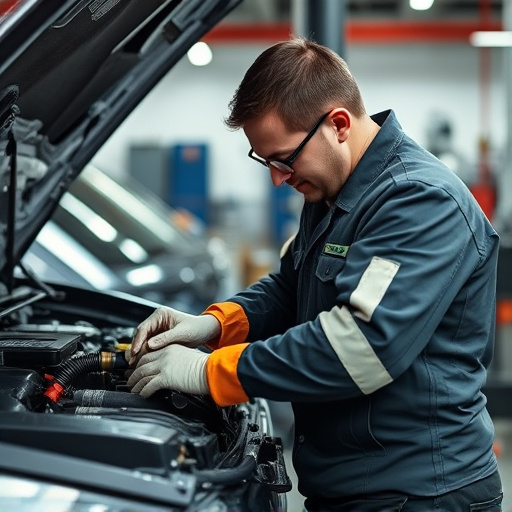
When it comes to Tesla structural aluminum repair, understanding welding considerations is paramount for achieving optimal joint strength. The unique properties of aluminum necessitate a precise approach. Unlike steel, aluminum has a lower melting point and a tendency to oxidize when exposed to air, which can compromise weld integrity. Therefore, specialized welding techniques and high-quality materials are essential for successful Tesla structural aluminum repair.
To ensure strong and durable joints, professional technicians utilize TIG (Titanium Gas) welding, known for its precision and ability to create clean, strong bonds. By carefully controlling the heat input and using inert gas to shield the weld area from oxygen, TIG welding minimizes oxidation and ensures a solid fusion. This meticulous process is crucial for maintaining the structural integrity of the repair, preventing weak points that could lead to future damage, even in the face of everyday wear and tear or minor accidents, including paintless dent repair and scratch repair scenarios.
In conclusion, mastering Tesla structural aluminum repair involves a deep understanding of its unique alloys and efficient welding techniques. By combining advanced repair methods with precise welding considerations, professionals can ensure structural integrity and maintain the superior quality expected from Tesla vehicles. These practices are vital for both maintaining performance and preserving the vehicle’s sleek design, making them essential skills for any automotive enthusiast or professional involved in Tesla structural aluminum repair.

